10 Top Tips For Beginner Climbers

Climbing is both sporty and exciting, a harmonious blend of adventure and the discovery of nature. It's the ideal sport if you want to push yourself beyond your limits and use your strength, and agility... Find the best beginner climbing tips on how to start climbing and maybe become a pro!
Climbing is a great way to challenge yourself both physically and mentally. This sport offers you an experience that puts your concentration to the test. Here's our advice on how to (gently) tackle this sensory-intensive sport, which is also great for boosting morale and self-confidence. Climbing can be practised at any age, from the very young to the very old, so you can start climbing at 10, 40 or even 80! As long as you're motivated, there are no restrictions. Don't forget that the main aim is to have fun!
What type of climbing should you choose?

Before you dive headlong into rock climbing, there are a few key points you need to be aware of. Firstly, you should know that there are two options for climbing: the artificial wall, which is indoors, and the natural wall, which is outdoors on natural boulders. In both cases it's important to get yourself used to safety rules and learn basic techniques to protect yourself, don't worry your guide will be helping you! You can also find out what type of climbing you prefer and where you feel most comfortable. There are several disciplines, including bouldering, route climbing and mountain climbing.
Bouldering is perfect for beginner climbers
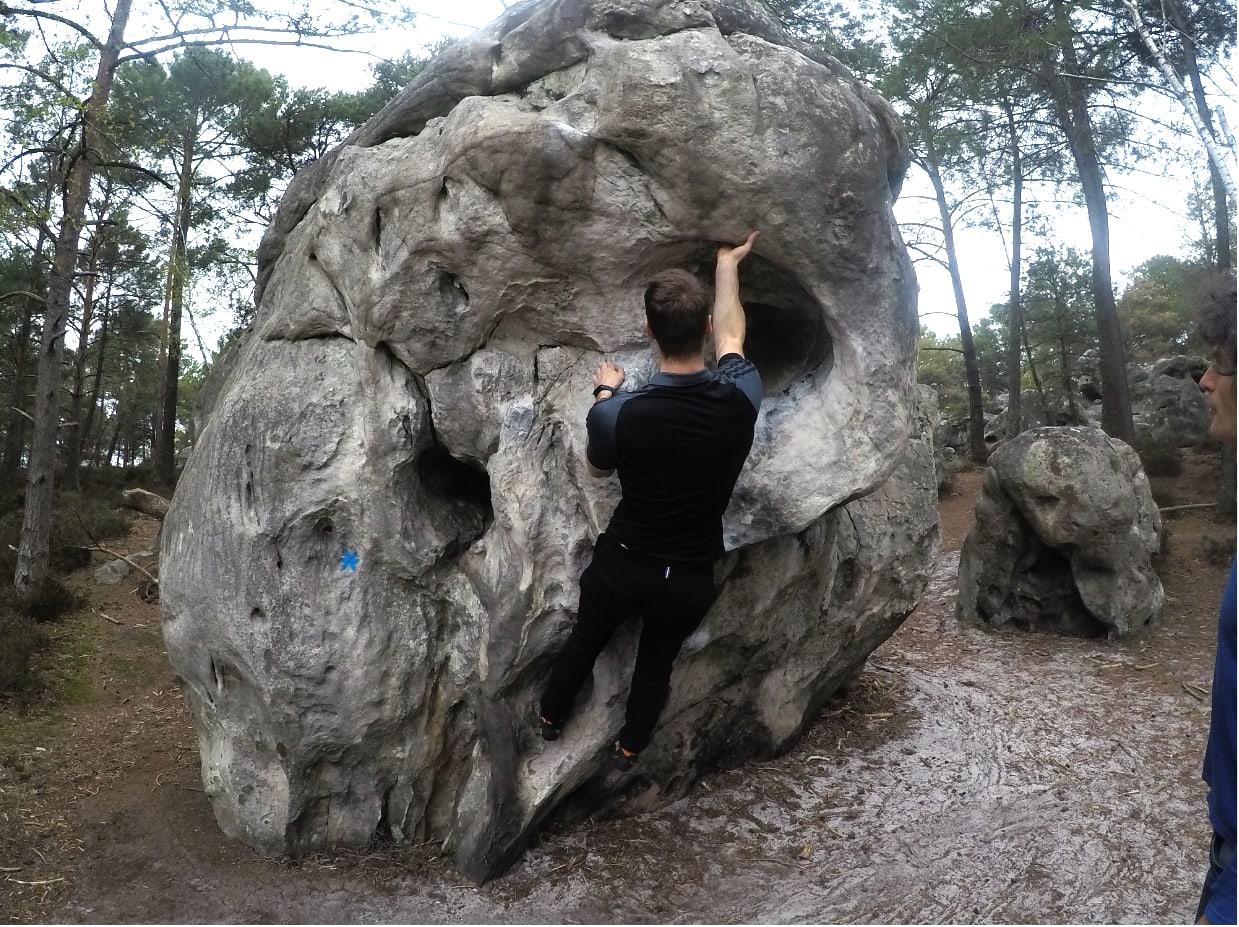
Bouldering is the best way to start, it can be practised indoors or outdoors, for example at the Fontainebleau climbing site, which is popular with beginners because of its well-developed environment.
Indoor bouldering should suit you, as the climbing surface is no more than 5 metres high for beginners. It doesn't generally require the same equipment as outdoor climbing (rope, karabiners, harness, etc.), and it's virtually risk-free because crash pads are usually placed underneath to cushion your fall if you fail. However, a proper warm-up is important to avoid injuries.
A boulder is a set of holds with different colours to help you find your way around and train in complete safety. In general, on an orange block, you will find 2 pieces of tape indicating foot holds or hand holds. If you find only one tape, that means you can use one foot or one hand.
Rock Climbing for beginners
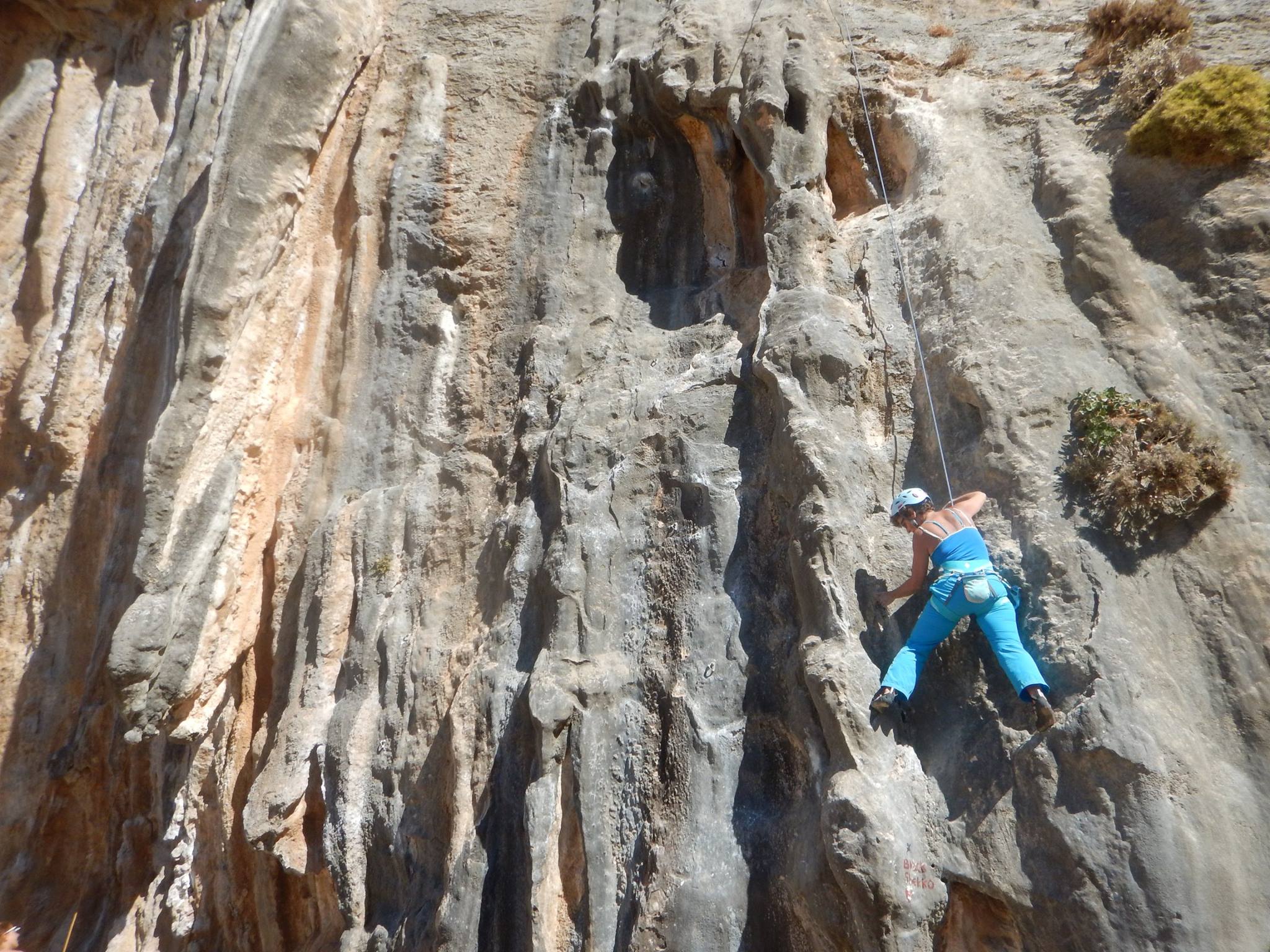
You can still make your first climbing attempts outdoors, although it's always better to start indoors to get used to the heights and sensations. There are lots of introductory climbing sessions! The instructor will teach you the basic techniques, how to progress on rock and how to handle ropes! This option is recommended for people who are sure they won't get dizzy and who are in reasonably good physical condition.
During sessions such as the one-to-one introductory climbing lessons in Kalymnos, you'll be able to marvel at the most beautiful limestone crags in the world while learning how to progress with advice tailored to your level from an expert instructor!
Physical Training
Physical preparation is essential if you want to progress in climbing! This is one of the best beginners climbing tips. As with any sport, you need to keep fit, so it's a good idea to do some weight training.
1. Working out
As you know, climbing is a sport that involves every part of the body, particularly the arms and fingers. Like every other sport, you must start building up your muscles, because working out also means better physical condition! The more advanced your level, the more perilous the positions you'll be putting yourself in, especially during cliff climbing, where your fingers will be clinging to the rock. It's a good idea to do some exercises that involve hanging for a few seconds. By using different finger grips, you can develop the muscles in your hands!
With your fingers outstretched or slightly bent, this warm-up technique will give you stronger fingers. This is an exercise to be repeated several times and often, because this technique is as important as it is slow, so you'll need to be patient to see any concrete results, the aim being to have your fingers bent as little as possible when you climb.
Recovery is the key, so don't be too demanding, your body needs to rest to recover properly from the training! We recommend two or even one climbing session a week. At first, you'll feel aches and pains all over your body, but with rest and a good diet, you'll be in great shape for the next session.
2. Eat smart and drink more
As in all sports, a body that has the right nutrients is more efficient in the face of effort! Climbing is an intense physical sport that demands a lot of energy, so a healthy diet is more than important.
Eat as many fresh, vitamin-packed foods as possible, as they provide a higher source of energy. Don't forget the proteins that are so important for building muscle. The aim is to stay fit and efficient, so we advise you to keep low fat and avoid sweets. And, of course, don't forget to drink water as much as possible before exercise to stay hydrated all the long. Specialists recommend up to two litres of water a day!
3. Work on your ZENitude
Working on yourself to keep calm is very important, so it's a good tip for getting off to a good start in this sport. With yoga sessions or breathing exercises, you can learn to control your agitation and calm yourself in all circumstances.
The most important quality of a climber is to keep calm and cool, even in extreme and dangerous situations. All expert climbers can deal with all kinds of problems thanks to self-control and their breathing. Yoga can also be an effective way to help you improve your flexibility and your respiratory system, as it encourages blood circulation and relaxes the muscles. Climbing and yoga are therefore quite complementary when it comes to developing your balance and breath.
Technical preparation
Technical preparation, like the physical one, is essential if you want to reach a good level and progress with confidence. Learning the importance of technique and tactics is a useful tip for beginner climbers.
4. Learn to read a wall
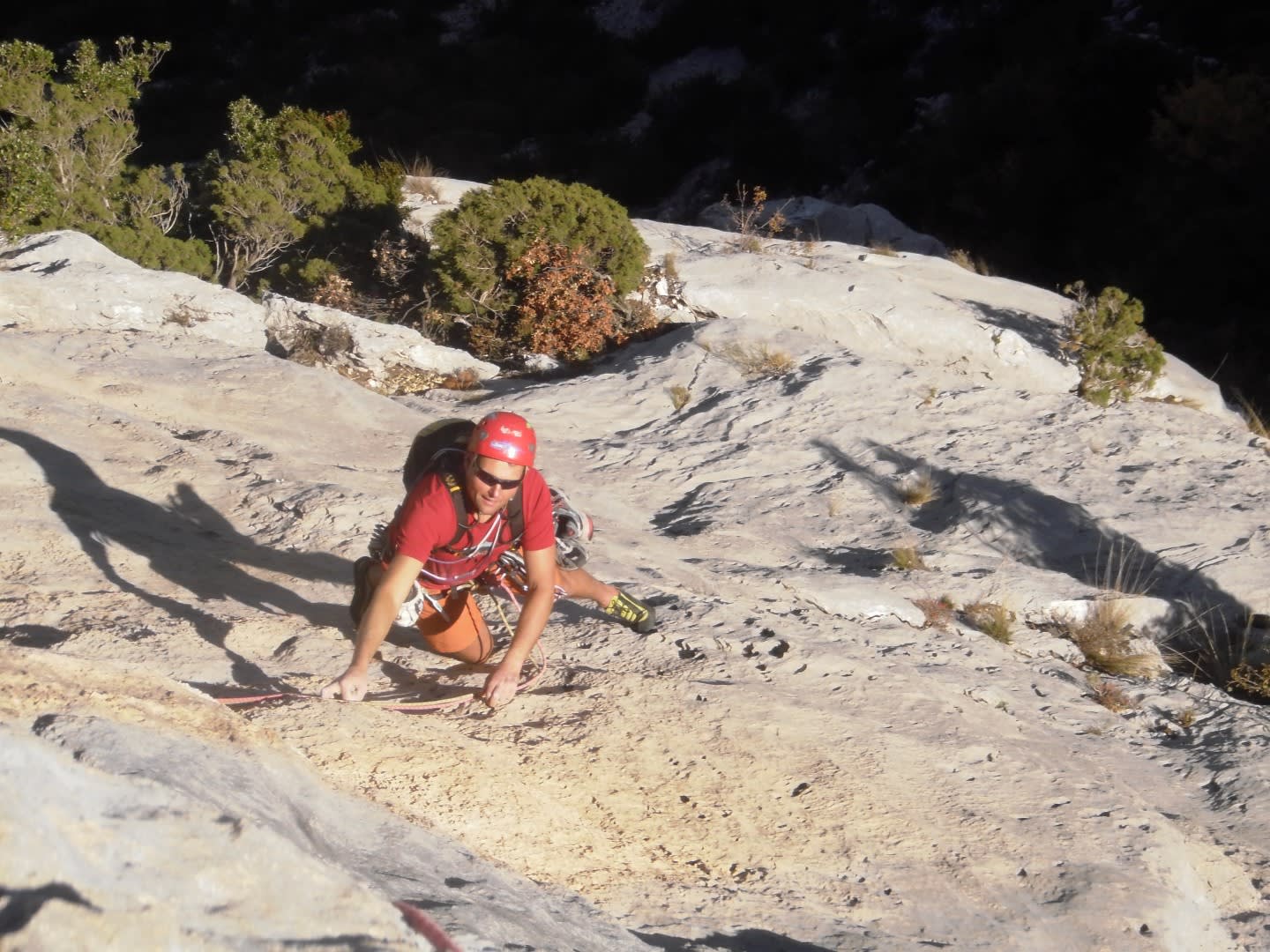
Learning to analyse a wall is one of our best beginners climbing tips that we can give you. It may seem obvious, but some people want to tackle a route without looking at it first. The aim is to visualise the wall, to learn to read it with all the points and places where you can slip a hand or a foot in and reach the top. Understanding, observing and analysing the route you are about to tackle must be done systematically. Project yourself and imagine your ascent and the route you will have to take on the wall before tackling it. This leaves less room for improvisation, but it can help when you're just starting out. Set estimates between each take and create mental images that will help you to set off with confidence.
5. Push, don’t pull
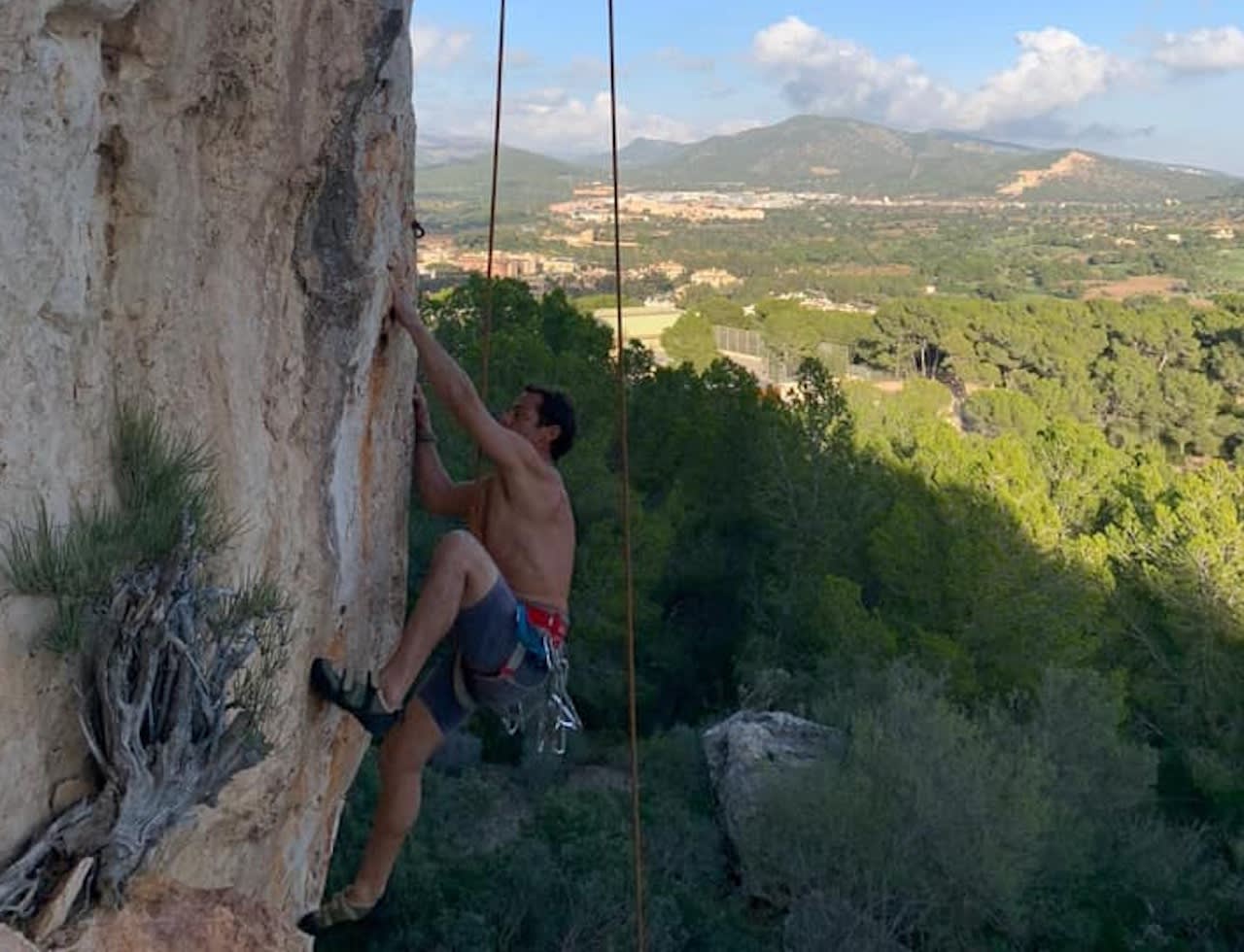
A classic mistake when you're starting is to climb and hold on to the holds with your arms bent. This allows you to grip tighter and stay closer to the wall because you're using your forearm muscles, but it also makes you tired more quickly and then you have no energy left to continue. The best thing is to try and keep your arms as straight as possible. And transfer the effort to the legs, which have much more muscle and strength. So it's best to bend your legs and exert pressure on your arms just to get the next hold. Most of the work is done in the legs! Balance depends on how you position your body, so learn to work your legs and feet so that you are stable on your feet.
6. Failure is your friend
Climbing is one of those sports where you have to know that you're going to fall. And falling means progress because it helps you visualise your failures so that you don't repeat them. Taking risks and going beyond your limits only works if you accept failure. The risk of falling, but also the risk of succeeding, and that's how you move forward. Progress means accepting failure and never giving up. Get out of your comfort zone and forget about other people's opinions, because there's only you on the wall, with your motivation and determination as your only allies.
The fear of falling is a real obstacle to progress in climbing, so you have to learn to fall without hurting yourself and then nothing will stop you from moving forward...
7. Don't neglect rest days
When you start and become passionate about this sport, you tend to climb as much as possible. That's quite normal and that's how you progress, of course, but it's also advisable to take breaks. Your body needs rest to assimilate all the effort and so does your brain to memorise and store this information. It all depends on your shape and build, but it's best to have recovery periods after several cycles or sessions.
Muscle fibres can tear during violent exertions so one of our best beginners climbing tips is to give them a little time to rebuild, you need to be patient. As well as stretching after training, take it easy for at least one day every two or three sessions, depending on your state of health.
8. Grab a buddy
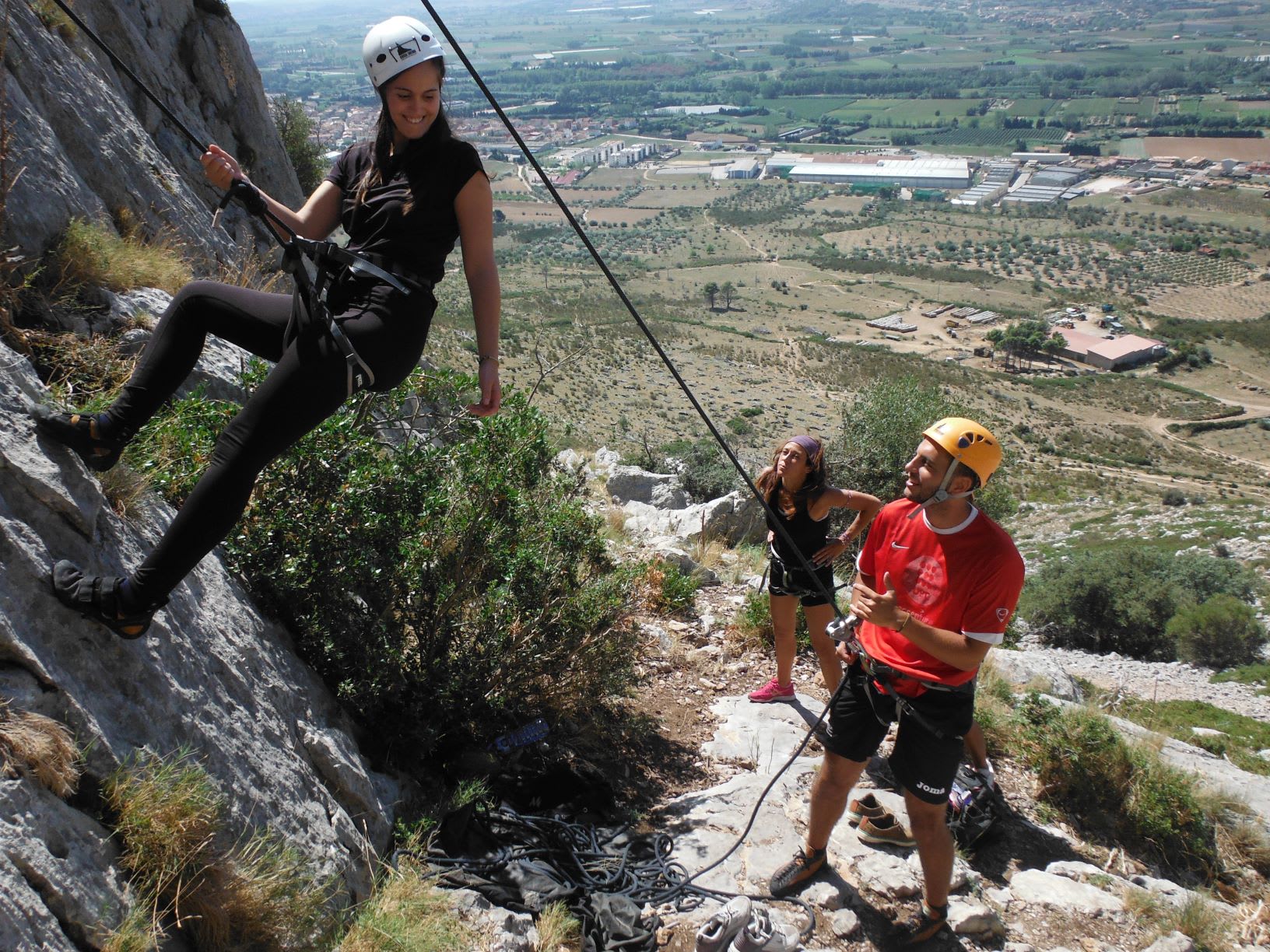
Even if, in theory, you're alone on this wall and faced with your limits, you can get help from a friend or a partner. The mind is very important in this discipline, even if it's supposed to be an individual sport, so if you feel weak, it's also important to get help. Whether your doubts are physical or psychological, the person accompanying you will have a role to play. To motivate you or to help you gain confidence with encouragement, a buddy can be the crucial support you need.
The best way to start would be to take a climbing course. There are introductory courses that are perfect for those who are curious to understand this sport. The instructors will be able to give you the right advice to help you progress. Choose someone you trust completely and, above all, don't neglect the safety rules. Create a routine for checking your equipment at each hold, and this should be done systematically, whatever your level.
9. Invest in quality equipment
Wondering what to buy to start climbing? One of our best beginners climbing tips is to buy some quality equipment! First of all, you need good shoes! As a beginner, you can opt for scratch shoes that are stiff enough to keep you comfortable.
A harness and rope will enable you to be roped up, so it's a good idea to buy your own if you want to go cliff climbing. Wouldn't it be a shame to miss out on a wall because of faulty equipment? There are also items used for anchoring (jammers, friends...) and here too you shouldn't compromise on quality, even if they aren't essential for beginners.
Gloves and a helmet can also help, even if it's more of a psychological help. A small chalk bag on your belt if you're going bare-handed can be useful too. And don't forget to check everything thoroughly before embarking on a vertical ascent.
A chalk bag is advisable for experienced beginners and those wishing to venture onto the cliffs.
10. Understand the grading system
Climbing grading is an evaluation of a route according to its type, its commitment and above all its difficulty. The climber who makes the first ascent of a route is generally the one who gives the first rating for the route. The grading system varies from country to country. In France, the rating is indicated by a number (3 - 9) but it may be different in other countries. This assessment is somewhat subjective because of the differences that climbers may feel depending on their abilities and specialities, but it remains the best way of estimating the general difficulty of the route.
Try introduction climbing courses
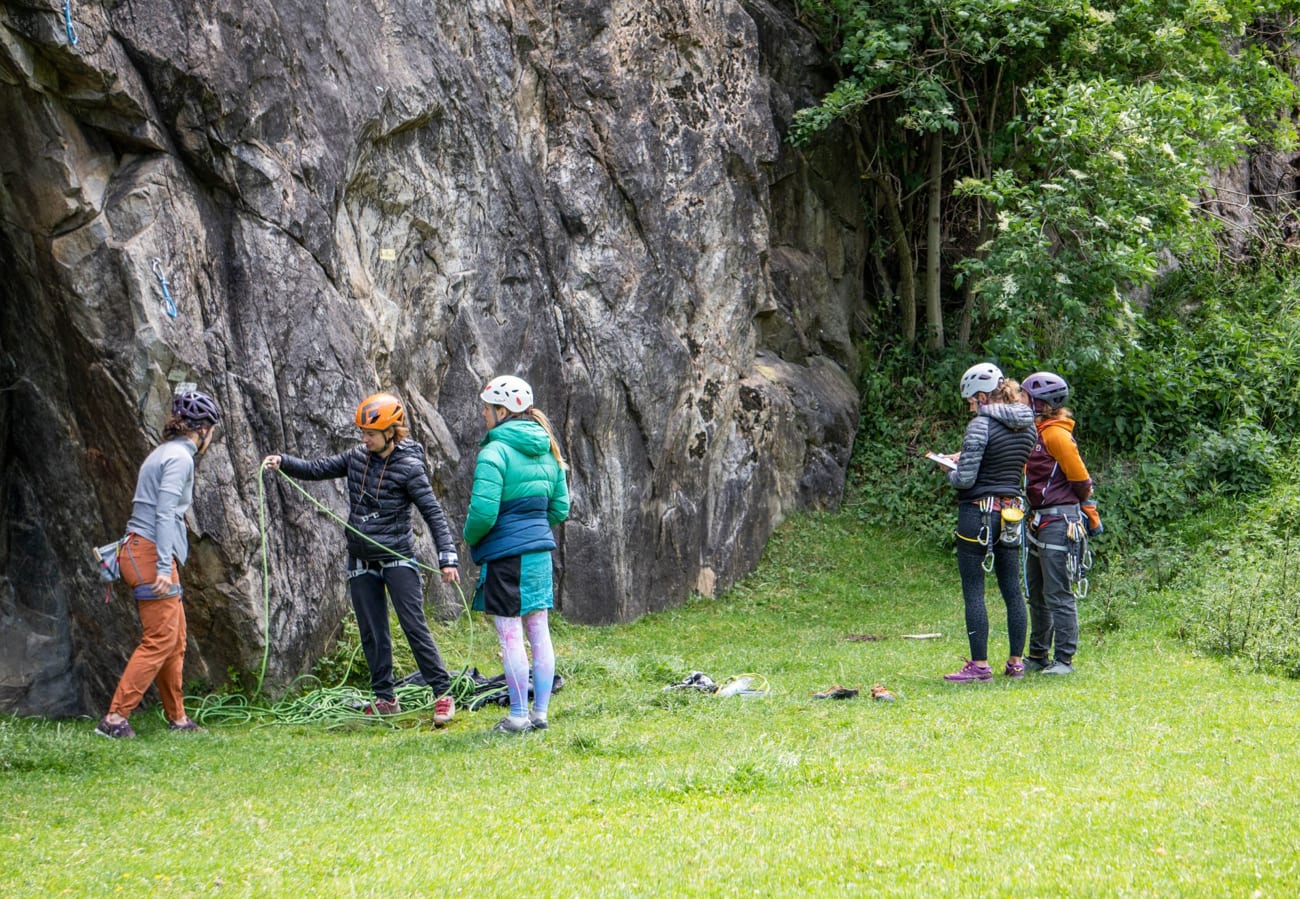
There are a good number of sites perfectly equipped for beginners with practical courses, such as the discovery climbing sessions in Marseille or the introductory rock climbing courses in Austria. Be sure that those lessons will help you practice for a few hours the basis of this sport! With a professional instructor, you will learn the fundamentals to reach your goals!
And if you want to find out even more about this fascinating sport, why not sit back in front of the television and watch the best rock climbing films? And who knows, maybe you'll want to take to the cliffs afterwards...